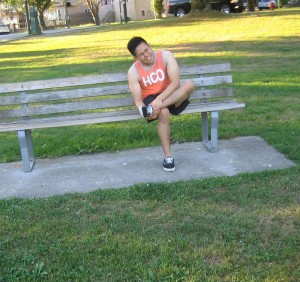Bursitis of the heel is basically the swelling of the bursa located at the back of the heel bone beneath the Achilles tendon.
Causes
It is a known fact that the bursa serves as the cushion as well as the lubricant between the muscles or tendons that slide over the bone. Bursas are present on majority of large joints all over the body, including the ankle. The retrocalcaneal bursa is positioned in the rear of the ankle by the heel in which the Achilles tendon connects to the calf muscles to the heel bone.
If there is repeated or overuse of the ankle, it can irritate or cause the bursa to swell. Walking, jumping or running vigorously for long periods are common causes. Take note that bursitis of the heel is also connected to Achilles tendinitis. An individual is at high risk for the condition if engaged in a vigorous workout routine or abrupt increase in the activity level without the appropriate conditioning.
Symptoms of bursitis of the heel

- Pain in the heel especially when running, walking or if the affected area is touched.
- Pain worsens when standing on toes.
- Reddish, warm skin over the back of the heel.
How bursitis of the heel is diagnosed
Your doctor will assess your medical history if you have symptoms of retrocalcaneal bursitis. The ankle will be examined to determine the location of the pain as well as check for redness in the back of the heel and tenderness.
If the ankle is bent upward, the pain worsens. The pain can also worsen once you rise using your toes.
In case the initial treatment could not provide relief to the symptoms, your doctor will request for an X-ray and MRI. An MRI is used to determine if inflammation is present.
Treatment for bursitis of the heel
There are first aid measures that you can follow when treating bursitis of the heel.
- Instruct the individual to avoid activities that worsen the pain.
- Apply ice on the affected heel several times in a day.
- Administer non-steroidal anti-inflammatory medications for pain relief.
- Minimize stress on the heel by using custom heel wedges.
- Ultrasound treatment during physical therapy can help minimize the inflammation.
- Physical therapy can help improve strength and flexibility on the ankle to improve the condition as well as prevent it from recurring.
In case these treatments do not work, your doctor might inject steroids into the bursa. After the injection is administered, avoid stretching the tendon since it can break open. If it is linked with Achilles tendinitis, a cast will be applied on the ankle to keep it immobile. In rare cases, surgery might be required to remove the inflamed bursa.
Preventing bursitis of the heel
Always maintain proper form when performing your exercise routine as well as good flexibility and strength around the ankle to prevent bursitis from developing. Even proper stretching of the Achilles tendon can help prevent the injury.